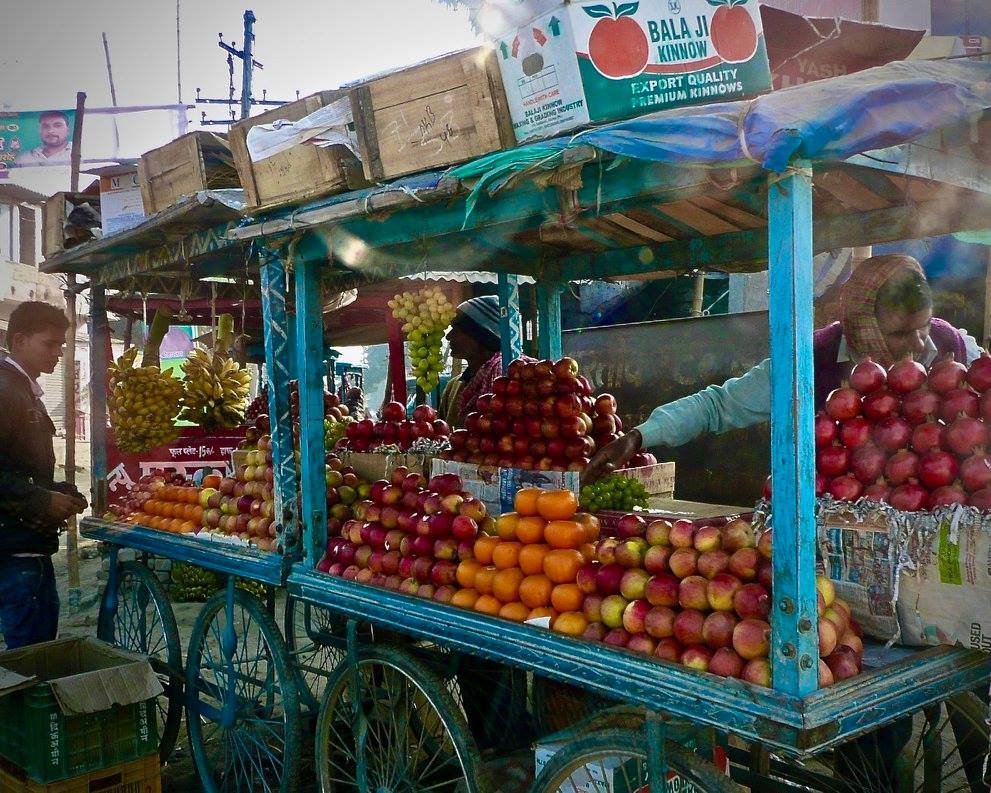
NUTRITION, FOOD, AND HUNGER CERTIFICATE
Module 3: Fighting Hunger
People who go hungry often do so because nutritious food is simply unaffordable. In high-income countries, people typically spend just a small percentage of their income on food. In contrast, in low-income or conflict-stricken countries, people may spend a large percentage of their income on food and in fact their food costs may exceed the amount that they earn.(1) In order to assess the “true cost” of a plate of food, the World Food Programme (WFP) measured the percentage of daily income that a person in a low-income or conflict-stricken country might spend on a basic plate of food and retro-projected this ratio onto the income of a person in a high-income country. They found that the ingredients to make a simple 600 calorie bean stew would cost a New Yorker 0.6% of their daily income and would cost someone in South Sudan as much as 155% of their income.(2) That is, in relative terms, the same plate of food would cost the American $1.20 and the South Sudanese $321.00.(3)
Short-Term Efforts
The WFP plays a major role in fighting global hunger. The WFP not only works to alleviate the symptoms of acute malnutrition and hunger, but also focuses on preventing hunger early on, thereby tackling the cycle of poverty and curbing hunger at its roots. The WFP has implemented projects such as providing school meals, giving food to people who learn particular skills (part of the Food for Assets and Food for Training programs), feeding patients with HIV/AIDS, connecting farmers to secure markets (part of a project called Purchase for Progress), and helping women gain access to food.
Some WFP projects encourage community members to work on or learn about programs that benefit the community. The school meals project provides nutritious meals to children who attend school. Since the poor often cannot provide food for their children at home, the promise of one healthy school meal per day encourages parents to send their children to school. This has been shown to be true in almost all nations in north and central Africa (including, but not limited to, Algeria, Egypt, Sudan, Kenya, Tanzania, and Somalia), Haiti, Columbia, Honduras, Nicaragua, Iran, Pakistan, Afghanistan, Laos, Cambodia, Indonesia, and other countries shown in the map below. Not only do children concentrate better when they are well nourished, but they also receive an education, the first step in ending the cycle of poverty. In 2017, 18.3 million children in 60 countries received school meals, snacks, or take-home food through the WFP.(4) The WFP's Food Assistance for Assets (FFA) program provides food for people who learn new skills that increase their community’s food security, while simultaneously building vital infrastructure. In 2017, 10 million people directly benefited from FFA programs in 52 countries.(5)
These programs are critical in supporting communities. The WFP provides food to patients with HIV/AIDS, for instance, because they typically require more nutrients. HIV can reduce a person’s work productivity, consequently decreasing food security. Food insecurity can lead patients with HIV to forgo treatment and engage in high-risk forms of employment, such as prostitution, to earn money for food. This, in turn, increases the risk of HIV transmission. The Purchase for Progress program invests in local farmers by buying their crops and connecting them with partners around the world. Finally, the WFP focuses on providing women with proper nutrition, not only because women are usually more afflicted by hunger (due to gender inequality), but also because they make up the bulk of agricultural labor, and play a key role in a family’s food security. Women make up just over 40 percent of the agricultural labour force in the developing world, ranging from 20% in the Americas, to 35% in South Asia and almost 50% in East and Southeast Asia, and 50% in sub-Saharan Africa.(6) Furthermore, studies have shown that income in the hands of women is more likely to go towards feeding their children, rather than towards themselves.(7)
Recent efforts have also focused on community-based management of malnutrition. Community members can treat children suffering from moderate to severe acute malnutrition (without hospitalization) through ready-to-use supplementary foods (RUSF) and ready-to-use therapeutic food (RUTF). Plumpy’Nut®, one form of RUTF, is a peanut-based paste mixture that is high in minerals, vitamins, energy, and protein, and was developed to target children with severe acute malnutrition. Plumpy’Nut® requires no preparation—it does not need refrigeration, cooking, or water. Plumpy'Sup® is a similar product, aimed at those suffering from moderate acute malnutrition.
Long-Term Solutions
Inevitably, hunger will only be eradicated once other issues, primarily poverty, are addressed. Though hunger and poverty are interconnected, international efforts must begin somewhere, and reducing poverty is a natural first goal. As Oxfam published in a briefing, “Without comprehensive reforms of national and global policies on food, agriculture, trade and climate change, no plan to fight hunger – however ambitious – will succeed.”(8) Similarly, the Sustainable Development Goals are an effort to undertake a multi-prong approach to achieving a better future for all that notes that health, poverty, inequality, climate, environmental degradation, prosperity, peace and justice are all interwoven.”(9)
Footnotes
(1) World Food Programme. “Counting the Beans: The True Cost of a Plate of Food Around the World.” (2017) https://bit.ly/2xISNyh.
(2) Ibid.
(3) Ibid.
(4) WFP. “School Meals.” https://www.wfp.org/school-meals/.
(5) WFP. "World Food Programme Food Assistance for Assets Fact Sheet.” (June 2018) https://bit.ly/2NCQPT6.
(6) Agricultural Development Economics Division, Food and Agriculture Organization of the United Nations. “The Role of Women in Agriculture.” Working Paper No.11-02 (March 2011). http://www.fao.org/docrep/013/am307e/am307e00.pdf.
(7) Smith, L. C. (Ed.). (2003). The Importance of Women's Status for Child Nutrition in Developing Countries (Vol. 131). International Food Policy Research Institute.
(8) Oxfam International. "Halving Hunger: Still Possible?" (September 2010) https://www.oxfamamerica.org/static/oa3/files/halving-hunger-still-possible.pdf.
(9) United Nations. “About the Sustainable Development Goals.”https://www.un.org/sustainabledevelopment/sustainable-development-goals/.
